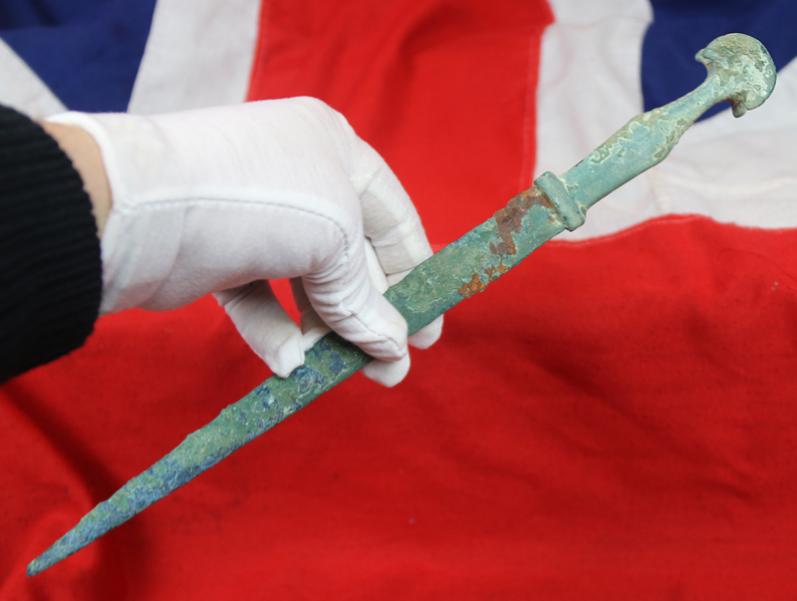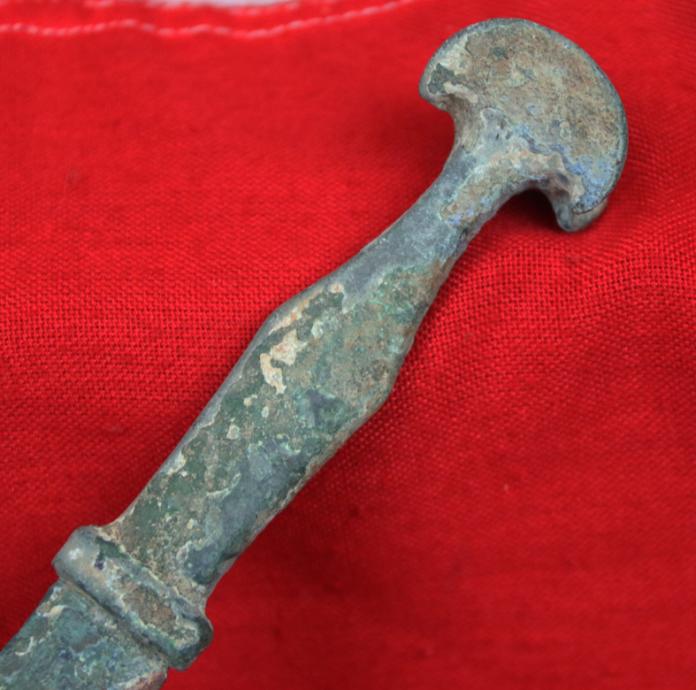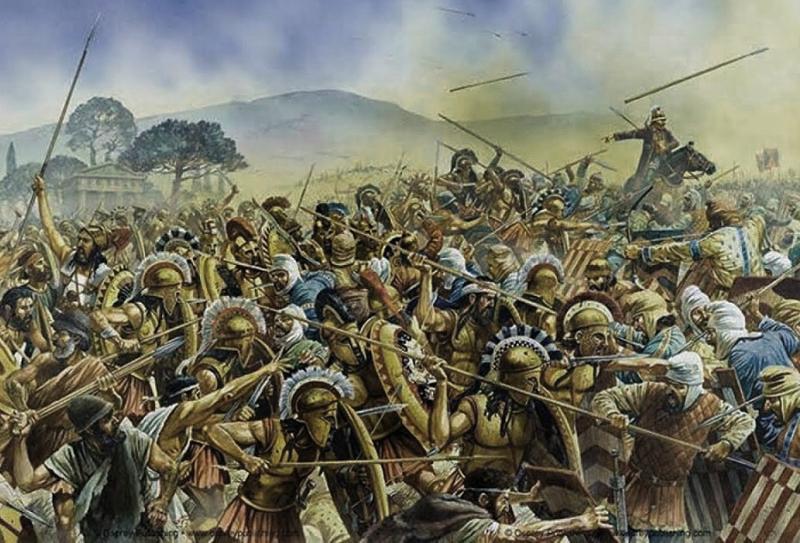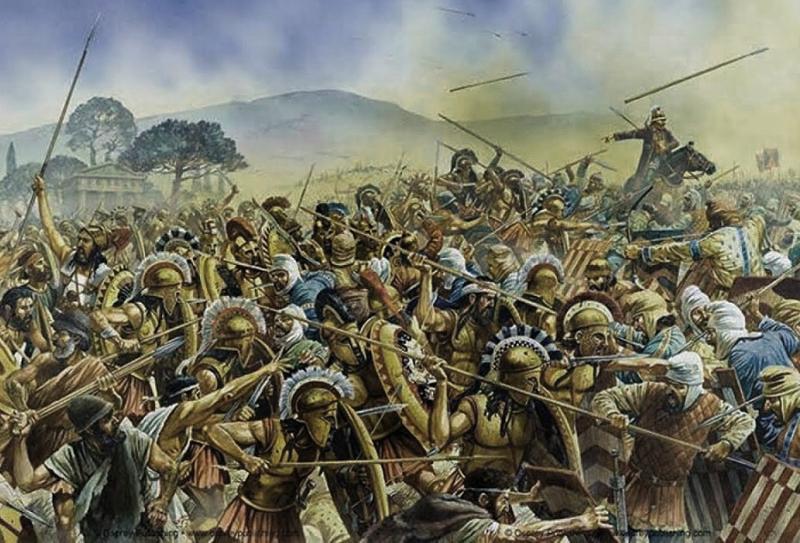A Beautiful Greco-Persian Wars Bronze Age Long Dagger Around 2500 Years Old. Such as From The Battles of Marathon, Thermopylae and Plataea
Approximately 2500 years old, Achaemenid Empire era, 550 bc to 330 bc From the the Greco-Persian War, such as includes the iconic battles of Marathon, Thermopylae and Plataea, up to the time of Alexander the Great. This wonderful antiquity, from one of the most eventful and ground breaking periods of classical history, is in amazing condition and beautifully decorated 6th-4th century BC. A bronze long dagger with narrow lentoid-section blade, collared grip with crescentic ears to the pommel. By the 7th century BC, the Persians had settled in the south-western portion of the Iranian Plateau in the region of Persis, which came to be their heartland. From this region, Cyrus the Great advanced to defeat the Medes, Lydia, and the Neo-Babylonian Empire, establishing the Achaemenid Empire. The Ionian Greek Revolt in 499 BC, and associated revolts in Aeolis, Doris, Cyprus and Caria, were military rebellions by several regions of Asia Minor against Persian rule, lasting from 499 to 493 BC. At the heart of the rebellion was the dissatisfaction of the Greek cities of Asia Minor with the tyrants appointed by Persia to rule them, along with the individual actions of two Milesian tyrants, Histiaeus and Aristagoras. In 499 BC, the then tyrant of Miletus, Aristagoras, launched a joint expedition with the Persian satrap Artaphernes to conquer Naxos, in an attempt to bolster his position in Miletus (both financially and in terms of prestige). The mission was a debacle, and sensing his imminent removal as tyrant, Aristagoras chose to incite the whole of Ionia into rebellion against the Persian king Darius the Great. In 490 BC the Persian forces were defeated by the Athenians at the Battle of Marathon and Darius would die before having the chance to launch an invasion of Greece. The Battle of Marathon took place in 490 BC, during the first Persian invasion of Greece. It was fought between the citizens of Athens, aided by Plataea, and a Persian force commanded by Datis and Artaphernes. The battle was the culmination of the first attempt by Persia, under King Darius I, to subjugate Greece. The Greek army decisively defeated the more numerous Persians, marking a turning point in the Greco-Persian Wars. Xerxes I (485–465 BC, "Hero Among Kings"), son of Darius I, vowed to complete the job. He organized a massive invasion aiming to conquer Greece. His army entered Greece from the north, meeting little or no resistance through Macedonia and Thessaly, but was delayed by a small Greek force for three days at Thermopylae. A simultaneous naval battle at Artemisium was tactically indecisive as large storms destroyed ships from both sides. The battle was stopped prematurely when the Greeks received news of the defeat at Thermopylae and retreated. The battle was a strategic victory for the Persians, giving them uncontested control of Artemisium and the Aegean Sea.
Following his victory at the Battle of Thermopylae, Xerxes sacked the evacuated city of Athens and prepared to meet the Greeks at the strategic Isthmus of Corinth and the Saronic Gulf. In 480 BC the Greeks won a decisive victory over the Persian fleet at the Battle of Salamis and forced Xerxes to retire to Sardis. The land army which he left in Greece under Mardonius retook Athens but was eventually destroyed in 479 BC at the Battle of Plataea. The final defeat of the Persians at Mycale encouraged the Greek cities of Asia to revolt, and the Persians lost all of their territories in Europe; Macedonia once again became independent. Alexander the Great, an avid admirer of Cyrus the Great, conquered most of the empire by 330 BC. Upon Alexander's death, most of the empire's former territory came under the rule of the Ptolemaic Kingdom and Seleucid Empire, in addition to other minor territories which gained independence at that time. The Iranian elites of the central plateau reclaimed power by the second century BC under the Parthian Empire. Ancient Greece. 191 grams, 35cm (13 3/4"). From a Japanese collection, 1990s.
Code: 23416
1595.00 GBP








